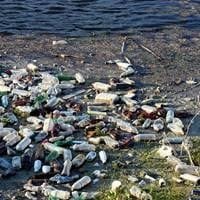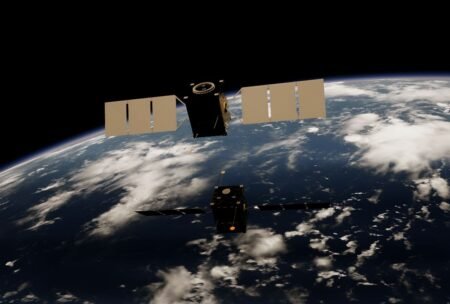(BRUSSELS) – EU Member States agreed their position Wednesday on a proposal to ban single-use plastics, clarifying the products covered and proposing that producers of plastic items cover the costs of litter clean-up.
In addition to banning single-use plastics, specific measures will be introduced to reduce the use of the most frequently littered plastic products, especially those that are often found on European beaches.
The decision was “an important step towards protecting our environment”, said Austria’s sustainability minister Elisabeth Koestinger, for the EU presidency, who said plastic producers would have to pay for cleaning up.
The Council has made the original draft directive clearer by being more specific in the listing of the products affected:
- On the definition of single-use plastic products, the Council clarifies that these products are typically intended to be used just once or for a short period of time before being disposed of.
- In determining whether a particular item is considered to be a single-use plastic product, the tendency for the item to be littered will play a decisive role. The Council wants the Commission to publish guidelines, in consultation with member states, on examples of what is to be considered a single use plastic product.
- The Council agrees with the Commission proposal to design single-use beverage containers so that their lids and caps stay attached to the bottle. In this regard, the Council specifies that bottles made of glass or metal are not covered by this directive but that it shall apply to plastic bottles and composite beverage packaging.
- Up to 2023, paper plates with plastic linings are included in the list of products for which there will be a reduction in consumption. Plates made wholly of plastic will be banned.
- The Council proposes ambitious extended producer responsibility schemes and an obligation on producers to cover clean-up costs and the costs of awareness raising measures, including for products which no such obligation exists currently, namely wet wipes and balloons.
The Council also wants the legislation to be more ambitious:
- The Commission has proposed that producers of plastic items cover the costs of litter clean-up. The Council wants this obligation to be extended to apply also to companies which import or sell such single-use plastic products or packaging in Europe.
- The Council adds expanded polystyrene cups for beverages to the list of items for which there will be a restriction on placing them on the market.
- There are certain single-use plastic products for which no suitable alternatives currently exist. However measures will be taken at national level to prevent an increase in the consumption of such products through the setting of national targets. The aim is to achieve a measurable and sustained reduction over a set period of time.
The Council has introduced provisions to improve the implementation of the directive:
- The Commission proposed an improved product design for caps and lids made of plastic for beverage containers in order to prevent their leakage into the environment. The Council has underlined the need for the rapid development of harmonized standards to ensure that this part of the proposal is implemented effectively.
- The Council has been more specific about the markings on those single-use plastic products which are most frequently thrown away inappropriately to allow consumers to make better choices.
- While the obligation to separate waste requires that different types of waste be kept separate, the Council’s position is that it should be possible to collect certain types of waste together, provided that this does not impede high-quality recycling. The setting of collection targets for plastic bottles should be based on the number of plastic bottles placed on the market or the number of waste bottles generated in any member state. The calculation of the weight of waste should take account of all waste plastic bottles, including those which are littered outside waste collection systems.
Finally, the Council has also taken measures to reduce the administrative costs of the directive:
- On extended producer responsibility schemes, the Council stresses that the calculation methodology for the costs of cleaning up litter should be proportionate. To reduce administrative costs member states may set financial contributions for cleaning up litter by agreeing multi-annual amounts.
- Provided that the targets and objectives of the legislation are achieved, member states may transpose the provisions on consumption reduction and extended producer responsibility schemes through agreements between the relevant authorities and the sectors concerned.
Member states broadly supported the mandate at today’s meeting, and some member states indicated that the interlinkages between this directive and the existing waste legislation need further consideration in the upcoming negotiations.
With the European Parliament having voted its position on 24 October, today’s mandate means that the EU’s Austrian Presidency of the Council can begin talks with the European Parliament. A first trilogue meeting is set to take place on 6 November.








